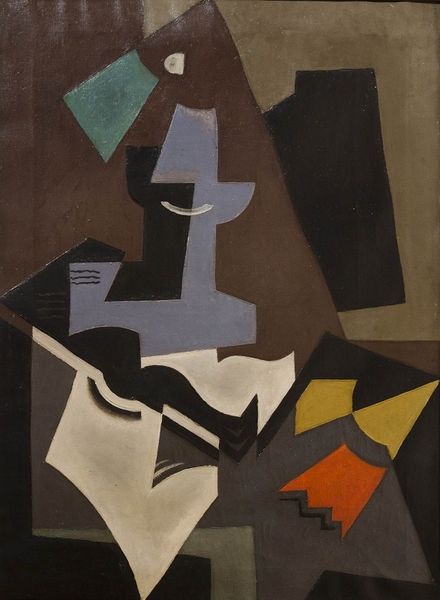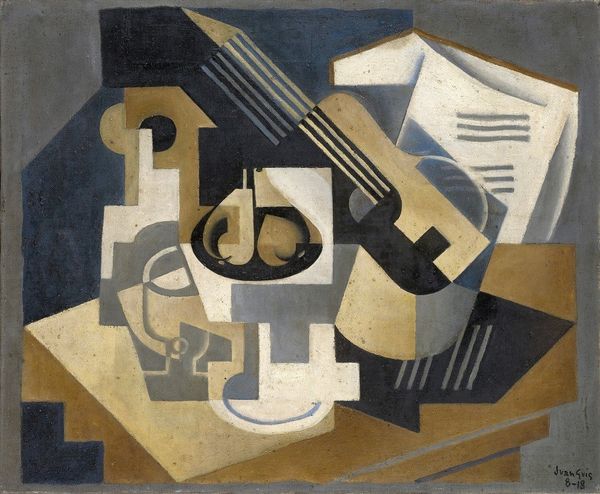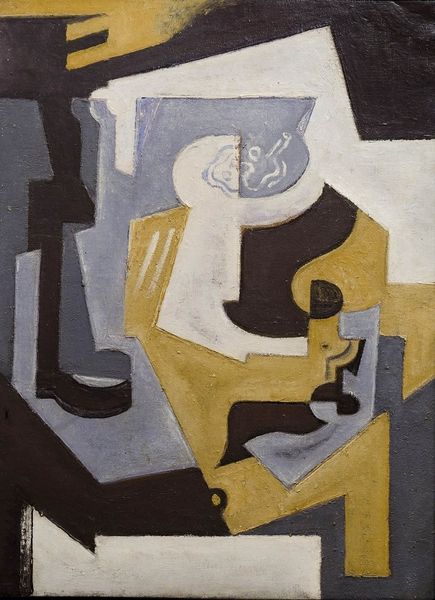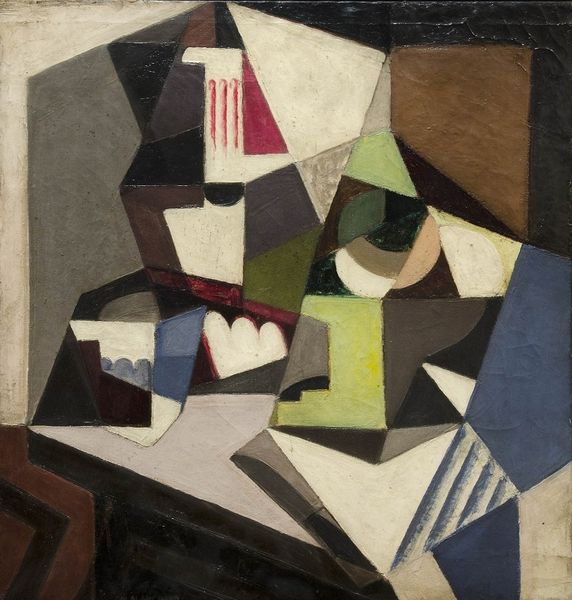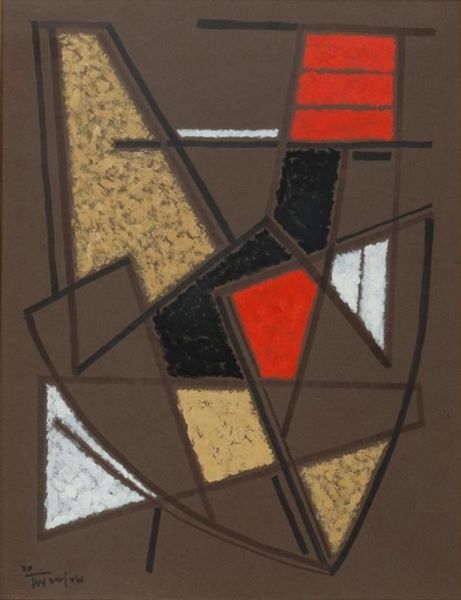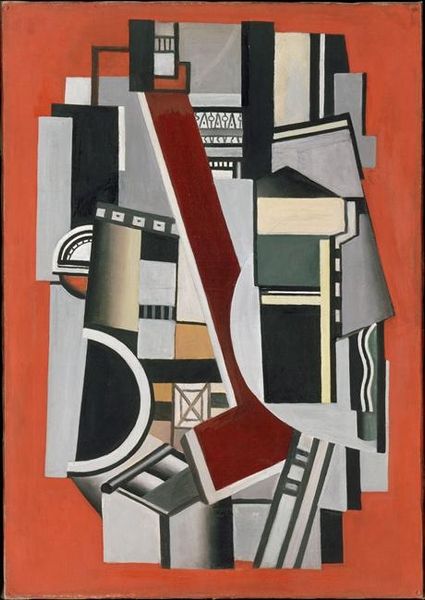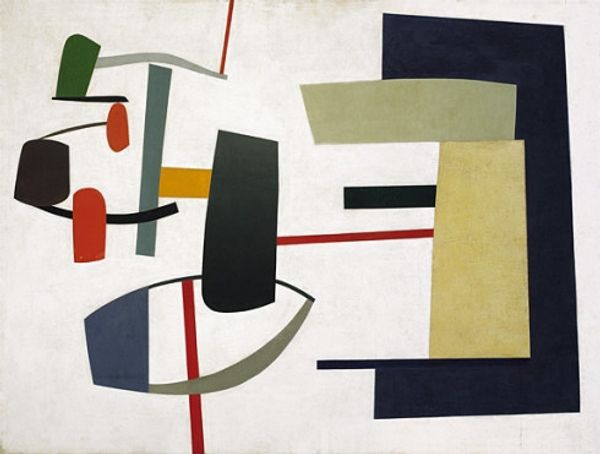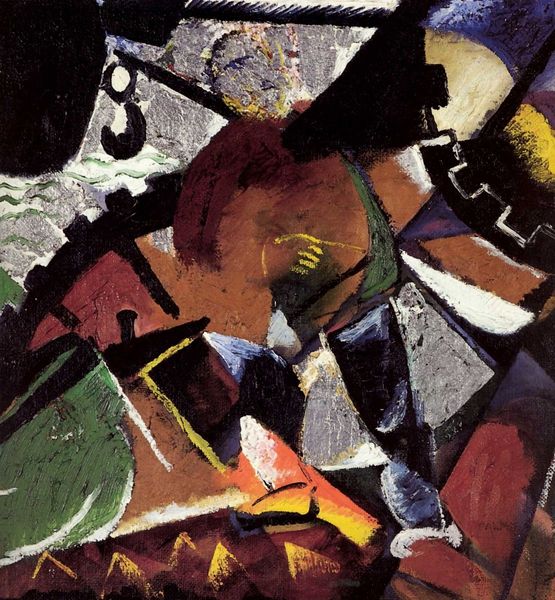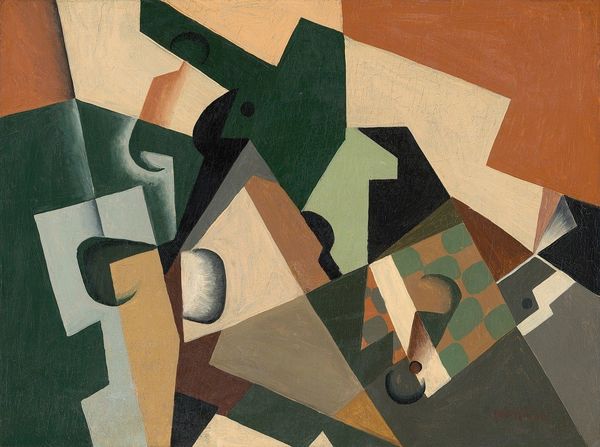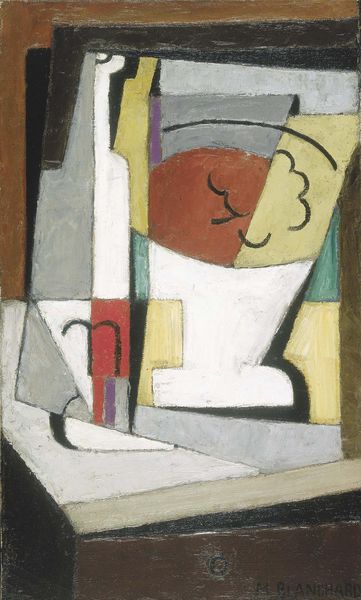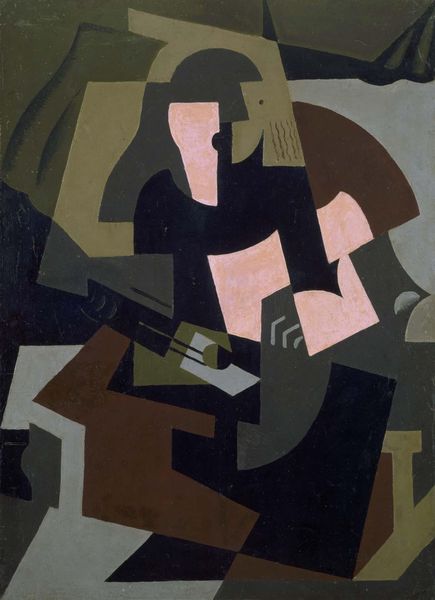
painting, oil-paint
#
cubism
#
painting
#
oil-paint
#
abstraction
#
modernism
Copyright: Karl Knaths,Fair Use
Editor: Here we have Karl Knaths's "Bach" from 1953, an oil painting playing with Cubist and Modernist ideas. It’s… intriguing. The colors are muted, yet the geometric shapes create a kind of visual rhythm. What do you see in this piece, especially thinking about its historical moment? Curator: Well, considering Knaths's interest in musical structure and artistic theory, it's crucial to understand how the social perception of abstraction evolved by the mid-20th century. The painting isn’t simply a formal exercise; it’s engaging with how we publicly receive and interpret art and music. Does it strike you as universally accessible, or something requiring particular knowledge? Editor: I definitely see a tension there. The title suggests high art, but the abstracted forms could easily be seen as quite populist in their departure from traditional representation. Curator: Precisely. And that's where the historical context matters. Abstract art after the war had a unique public role, sometimes perceived as elitist, sometimes as liberating. Knowing Knaths situated himself within these debates invites questions. Is it an effort to democratize high art by embracing a more accessible visual language? Or is it a complex commentary accessible only to those already in the know? Consider its exhibition history. Who was the intended audience, and how might they have understood its references? Editor: So, beyond just the shapes and colors, the act of exhibiting and naming the piece “Bach” becomes a social and political statement? Curator: Absolutely! By linking abstract art with classical music—specifically Bach—Knaths challenges conventional tastes and engages in cultural dialogues about modern art’s place in society. We might even consider who 'owns' art – the elite or the public? Editor: It’s amazing to realize how a painting titled after a composer can open up conversations far beyond the purely visual, bringing social hierarchies and access to knowledge into the picture. Thanks for sharing your perspective. Curator: It works both ways; your observations also remind us that artistic interpretations can transcend their original historical constraints and become culturally relevant in unexpected new ways.
Comments
No comments
Be the first to comment and join the conversation on the ultimate creative platform.
